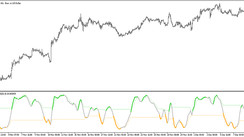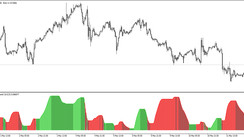Australian Dollar Takes a Dip
On Thursday, the Australian Dollar encountered a significant decline, primarily attributed to the outcome of the Federal Reserve policy meeting held the previous day. During the European trading session, the AUD/USD pair was recorded at a trading rate of 0.6514, exhibiting a 0.78% decrease. Earlier on, it had plummeted to a low of 0.6508, the lowest observed since November 20th.
Fed Signals Anticipated Stability
The Federal Reserve convened on Wednesday keeping the interest rates stable for the fourth consecutive month - a move that didn't surprise the market players. The rate-tightening phase has largely fulfilled its aim of decreasing inflation and it's highly anticipated that the Fed's tightening policy has ended. Jerome Powell, the Chair of Federal Reserve, had hinted at prospective rate cuts during the December session for 2024. That caused the market to factor in a rate cut for March; however, the Fed has been resisting this speculation, despite a few US economic indicators being more robust than expected.
Market Expectations Shift
The mounting resistance from the Fed has cajoled the market into revising its expectations of a rate slash in March. The probability of a March cut, which was over 80% in December, was reduced to 48% leading up to Fed's meeting. Subsequent to the meeting, the likelihood of a rate cut in March dropped further to 35%, as per CME FedWatch tool. Now, as market participants set their sights on the May meeting, a rate cut at that point has been extensively factored in.
Fed Statement and Powell's Conference
The statement from the policy meeting indicated that there would likely not be any decrease in the target range until there's increased assurance that inflation is consistently moving towards the two percent mark, thereby indicating to the market not to anticipate a rate cut in March. This sentiment was echoed by Powell in his press briefing, confirming that a rate cut in March was unlikely, although not completely eliminating the possibility. Powell emphasized that the decline in inflation had not negatively impacted the economy or triggered elevated unemployment. This conveyed a more relaxed approach to implementing rate cuts.
Australian Economic Climate
The Australian data suggests a dwindling economy, especially right before the Reserve Bank of Australia's assembly scheduled for February 6. The inflation rate reduced to 4.1% y/y in Q4, a drop from 5.4% in Q3. Moreover, the retail sales for December also reported a downturn with a 2.7% m/m decline. It is now anticipated that the RBA will hold off next week, with chances of them trimming rates later in the year.





